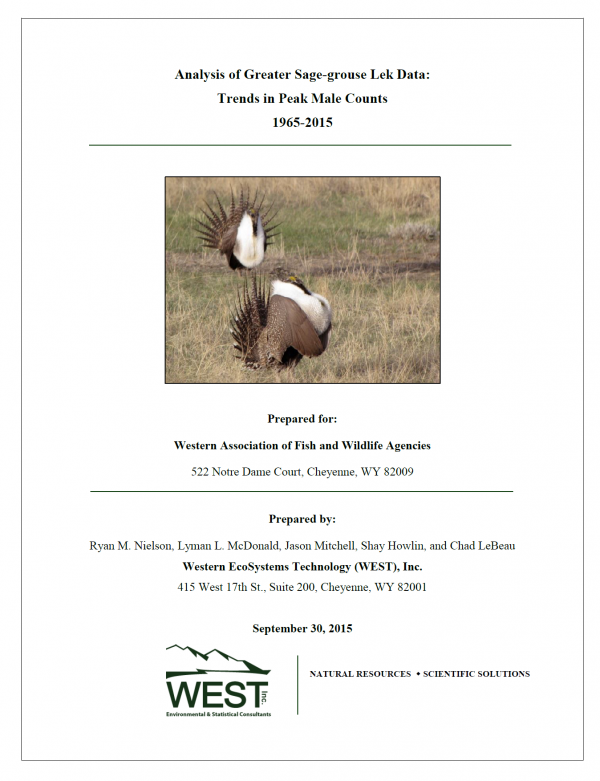Trends in greater sage-grouse breeding populations are typically indexed by determining the peak number of males attending a lek in a lekking season. Numerous studies have estimated negative trends in sage-grouse breeding populations over time via data collected for the last 50 years. However, the inherent bias in data collection and unknown relationship between lek counts and population size limits the utility of using counts to evaluate range-wide population trends. This study estimated trends in the male segment of greater sage-grouse breeding populations within core and periphery areas in seven habitat management zones during two time periods, 1965-2015 and 2005-2015. In addition, we compared analysis methods used in this study to previous studies, and provided recommendations on future data collection...
SUGGESTED CITATION
Nielson, R. M., L. L. McDonald, J. Mitchell, S. Howlin, and C. LeBeau. 2015. Analysis of greater sage-grouse lek data: Trends in peak male counts 1965-2015. Western EcoSystems Technology, Inc., Cheyenne, Wyoming, USA.
Attached Files
| File | Action |
|---|---|
| GRSG Report for WAFWA.pdf | Download |
- Version
- File Type pdf
- File Size 1.29 MB
- Publication Date September 1, 2015
